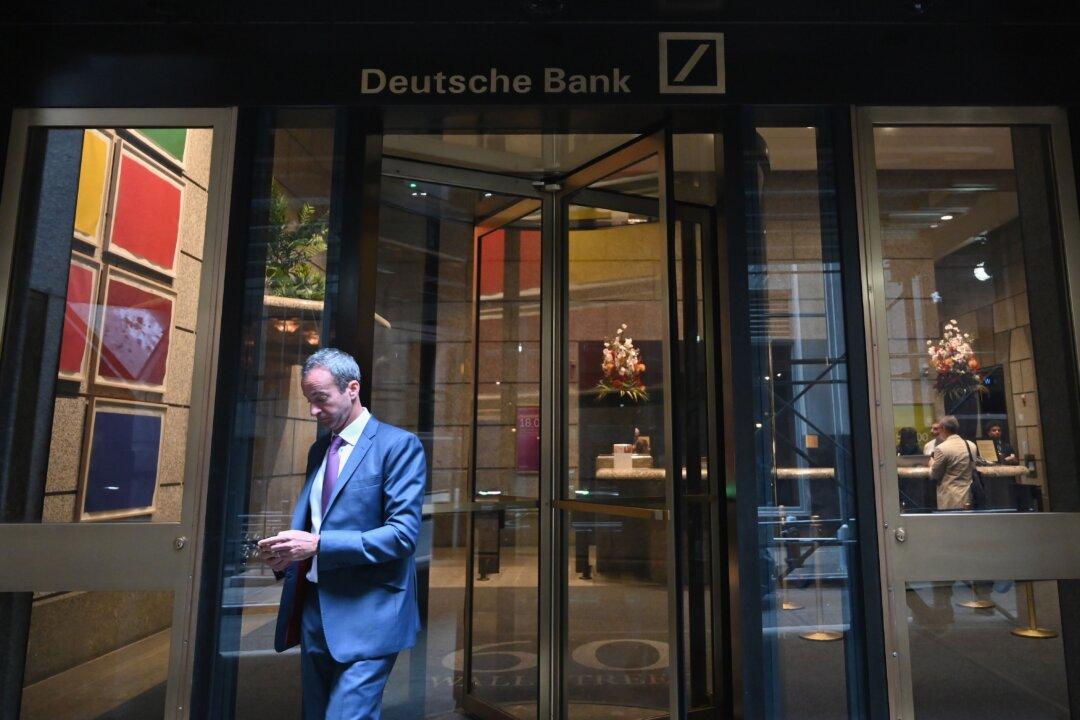In the week of June 13, the U.S. Federal Reserve, European Central Bank, Swiss National Bank, and Bank of England raised interest rate policies at varying degrees.
Central bank officials in the West are aware that the implementation of aggressive tightening policies to control inflation could risk pushing their economies into a recession, while global growth is beginning to slow due to a myriad of factors.
Shares in the S&P 500 and the Nasdaq composite have already fallen into a bear market on Wall Street.
U.S. consumer price inflation hit 8.6 percent in May 2022, a 41-year high, while the eurozone hit 8.1 percent inflation in the same month.
Deutsche Bank Chief U.S. economist Matt Luzzetti predicts that the consumer price index, which covers payment for goods and services, will peak at 9 percent in the third quarter of 2022.
The Fed is expected to raise rates again later in 2022 after hiking interest rates by 75 basis points on June 15, with a point target range of 1.5 percent to 1.75 percent.More Rate Hikes Coming
Goldman Sachs has warned its clients that it expects another 75-basis-point hike in July, according to Forbes.The European Central Bank (ECB) has confirmed that it will hike interest rates by 25 basis points at its July meeting and by 25 to 50 basis points in September.
“One thing is clear: if there is a sudden stop of Russian gas, the likelihood of a recession coming sooner is obviously far higher. There is no doubt,” Deutsche Bank’s Sewing told CNBC.
The Deutsche Bank CEO said he’s concerned about the war in Ukraine’s effect on Russian energy imports to Europe, which is seriously vulnerable to a potential termination of Russian gas supplies.
“But I would say that overall, we have such a challenging situation that the probability of a recession also in Germany, or in Europe in 2023 or the year after, is higher than we have seen it in any of the previous years, and that is not only the impact of this awful war, but look at the inflation. Look at what that means for monetary policy.”
Supply chains are also being stressed by demand, driven by a hot global economy and pandemic-related lockdowns in China.
Sewing said the peculiar maelstrom of different factors is also making him less confident in the traditional models, as the global economy faces a “perfect storm” of “three or four real levers which can cause, at the end of the day, a recession.”
“That is such a challenging situation that we have three, four drivers which can severely impact the economy, and all of that coming together in one and the same time means that there is enough pressure and a lot of pressure on the economy, and hence the likelihood of a recession coming into Europe, but also in the U.S., is quite high,” he said.
“I would say that the inflation is something that really worries me most and therefore I do think that the signal which we got from the central banks, be it the Fed but now also the ECB, is the right signal,” said Sewing, referring to his bigger concerns over inflation.
U.S. Gross Domestic Product to Drop
The Deutsche Bank economist believes that U.S. GDP growth will drop below 1 percent in the first half of 2023, followed by a 3.1 percent contraction in the third quarter of 2023.
Luzzetti said he expects growth to contract by another 0.4 percent in the last quarter of 2023.
“A more severe tightening of financial conditions could easily pull forward recession risks to around the turn of the year, which could short-circuit the Fed’s tightening cycle,” added Luzzetti.
“That said, higher inflation during that period would likely constrain the Fed’s ability to cut rates to counteract the downturn. On the other side, a more resilient economy in the near-term with more persistent inflation pressures would spell upside risk to our Fed view.”
On June 20, Japanese investment bank Nomura became the second bank to predict that a “mild recession” in the United States is likely to occur sometime near the end of 2022.
Nomura predicted that inflation is likely to “remain elevated” throughout 2022 and that the American economy is likely to contract by 1 percent in 2023, after the Fed’s latest move.





